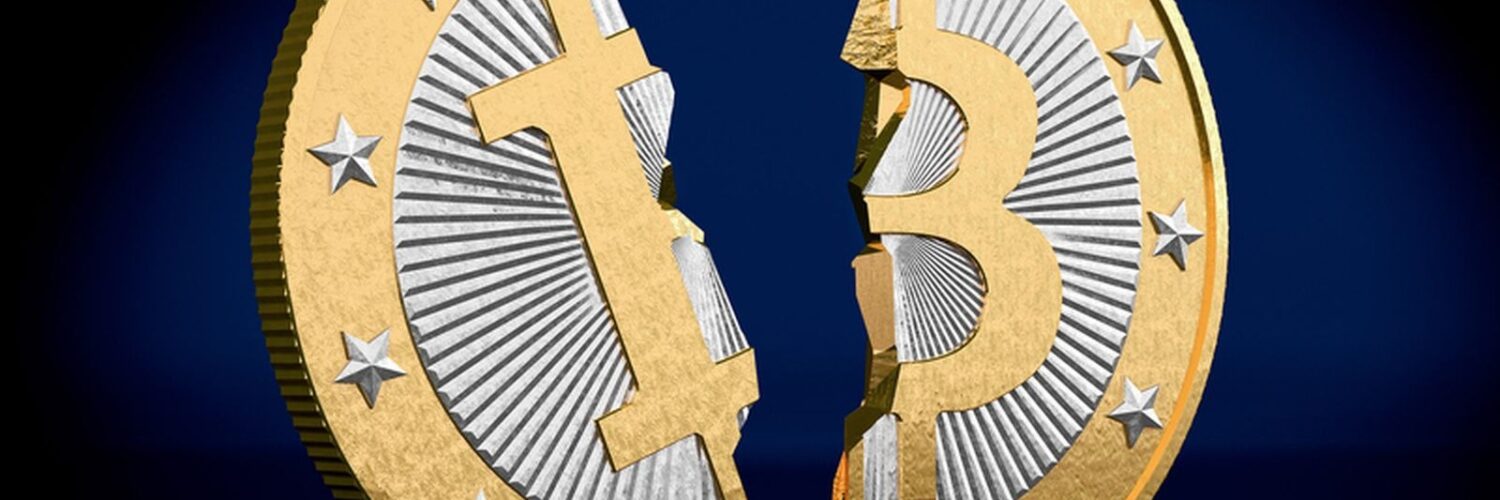The Bitcoin halving, also known as the block reward halving, is a significant event in the world of cryptocurrency. It occurs approximately every four years and has a direct impact on the Bitcoin network’s monetary policy. During this event, the reward given to miners for validating transactions and adding them to the blockchain is reduced by 50%. As a result, the number of new Bitcoins created per block is halved.
The halving is deeply rooted in the Bitcoin protocol and serves several essential purposes. First, it contributes to Bitcoin’s scarcity. With a fixed total supply of 21 million Bitcoins, the gradual reduction in block rewards ensures that new Bitcoins are minted at a decreasing rate. This scarcity has historically led to increased demand and potential upward pressure on Bitcoin’s price. Second, the halving incentivizes miners to innovate and find more efficient ways to secure the network while maintaining profitability. Finally, each halving event marks a milestone in Bitcoin’s journey, emphasizing its decentralized nature and the adherence to a predetermined monetary policy.
In April 2024, Bitcoin experienced its fourth halving, reducing the block reward from 6.25 to around 3.125 Bitcoins per block. As the community continues to monitor the effects of this event, the halving remains a fundamental aspect of Bitcoin’s long-term sustainability and value proposition

Definition
The Bitcoin halving is a crucial event within the Bitcoin network, occurring at regular intervals. Specifically, it takes place approximately every four years, or after every 210,000 blocks have been mined. During this event, the block reward—the amount of newly minted Bitcoins given to miners for successfully adding a block to the blockchain—is reduced by 50%. In other words, the number of new Bitcoins created through mining is effectively halved.
This reduction in block rewards serves several purposes. First and foremost, it contributes to Bitcoin’s monetary policy by gradually limiting the total supply of Bitcoins. With a fixed cap of 21 million Bitcoins, the halving ensures that new coins are introduced into circulation at a diminishing rate. Consequently, scarcity plays a significant role, potentially driving up demand and influencing Bitcoin’s market value. Second, the halving acts as an incentive for miners to continually improve their mining efficiency and adapt to the changing landscape. Lastly, each halving event marks a milestone in Bitcoin’s evolution, emphasizing its decentralized nature and adherence to a predetermined set of rules.
Frequency
Approximately every four years, or after every 210,000 blocks have been mined, the Bitcoin network experiences a significant event known as the halving. This predetermined adjustment is hard-coded into the Bitcoin protocol and serves as a critical aspect of its monetary policy. By adhering to this fixed schedule, Bitcoin ensures that the rate of new coin issuance gradually diminishes over time.
The 210,000-block interval corresponds to roughly four years, given the average block generation time of approximately 10 minutes. When this milestone is reached, the block reward for miners is reduced by 50%. As a result, the number of newly created Bitcoins per block is halved. This scarcity-driven mechanism plays a vital role in shaping Bitcoin’s long-term value proposition and underscores its unique position as a decentralized digital asset.
Impact on Mining Rewards
Prior to the halving, miners receive a fixed number of Bitcoins as a reward for successfully mining a new block. Historically, this reward has been set at 12.5 Bitcoins per block. However, when the halving occurs, this reward is cut in half. For instance, after the most recent halving in April 2024, the block reward decreased from 6.25 to approximately 3.125 Bitcoins per block.
The reduction in block rewards directly impacts miners’ revenue. With fewer newly minted Bitcoins per block, miners must adapt to the changed landscape. Some miners may find it less profitable to continue mining, especially if their operational costs exceed the rewards they receive. As a result, we often see shifts in mining activity and the distribution of hash power across different mining pools.
Despite the reduced rewards, the halving serves as an incentive for miners to innovate and optimize their mining operations. Miners strive to improve efficiency, reduce energy consumption, and enhance their hardware setups. This competitive environment encourages ongoing development within the mining industry.

Scarcity and Deflation
Bitcoin’s protocol enforces an absolute cap on the total supply of Bitcoins—21 million to be precise. Unlike traditional fiat currencies, which can be printed indefinitely by central banks, Bitcoin adheres to a predetermined issuance schedule. Each halving event reduces the rate at which new Bitcoins are created, gradually approaching the ultimate limit.
Scarcity is embedded in Bitcoin’s DNA. As the halving occurs approximately every four years, the rate of new coin issuance decreases. This scarcity has historically led to heightened demand among investors, speculators, and enthusiasts. The idea that there will only ever be a finite number of Bitcoins creates a sense of rarity and exclusivity.
Scarcity often translates into increased value. As the supply becomes scarcer due to halvings, the potential for upward price pressure emerges. Investors recognize that they are acquiring a digital asset with a fixed supply—one that cannot be arbitrarily inflated. Consequently, scarcity contributes to the store of value narrative associated with Bitcoin.
Historical Context
The first Bitcoin halving occurred in 2012, approximately three years after Bitcoin’s creation by the pseudonymous Satoshi Nakamoto. At that time, the block reward was reduced from 50 Bitcoins per block to 25. This event marked a critical milestone in Bitcoin’s journey, emphasizing its deflationary nature and unique monetary policy.
Second Halving (2016): In 2016, the second halving took place, further reducing the block reward to 12.5 Bitcoins per block. By this point, Bitcoin had gained significant attention and had become a recognized digital asset. The halving events were closely watched by the crypto community, and discussions around scarcity and long-term value intensified.
Third Halving (2020): The third halving occurred in 2020, bringing the block reward down to 6.25 Bitcoins per block. By this time, Bitcoin had become a household name, attracting institutional investors, hedge funds, and retail traders. The halving was accompanied by increased media coverage and debates about its impact on the market.
Fourth Halving (2024): Most recently, in April 2024, Bitcoin experienced its fourth halving. The block reward was further reduced to approximately 3.125 Bitcoins per block. By now, the halving events had become predictable, and the crypto community awaited the effects on price, miner behavior, and overall market sentiment.
Market Reactions: Historically, halvings have been associated with bull markets. The reduction in new coin issuance, coupled with growing adoption and interest, often led to increased demand and upward price movements. However, each halving also brought its share of volatility and uncertainty.
Incentivized Mining Innovation
The halving event forces miners to adapt their strategies. With reduced block rewards, miners must find more efficient ways to validate transactions and secure the network. This often leads to improvements in mining hardware, energy efficiency, and operational practices.
Competition and Survival: The competitive nature of mining encourages innovation. Miners compete for the limited rewards, and those who can mine more efficiently and cost-effectively are better positioned to survive. As a result, we see ongoing developments in mining technology.
Economic Rationality: Miners operate based on economic rationality. They seek to maximize their profits while minimizing costs. The halving prompts them to explore innovative solutions, such as optimizing hash rates, using renewable energy sources, or collaborating in mining pools.

Conclusion
The Bitcoin halving represents a remarkable milestone in the evolution of digital currency. Its predictable occurrence, embedded within the protocol, ensures that Bitcoin adheres to a deflationary monetary policy. As the block rewards decrease over time, scarcity becomes a defining feature, attracting investors seeking a store of value beyond traditional fiat currencies.
Market Sentiment and Innovation: Each halving event triggers discussions, speculation, and market dynamics. Historically, halvings have been associated with bull markets, as reduced supply meets growing demand. Miners, driven by economic incentives, innovate to optimize their operations. Whether through improved hardware, energy efficiency, or novel mining strategies, the halving fosters ongoing progress within the crypto ecosystem.
Long-Term Viability: Looking ahead, the Bitcoin halving remains a critical aspect of its long-term viability. It reinforces the network’s decentralization, encourages responsible mining practices, and underscores the belief that Bitcoin’s scarcity-driven model will continue to shape the future of finance. As we await the next halving, the crypto community remains vigilant, celebrating each milestone in Bitcoin’s journey.





Add comment